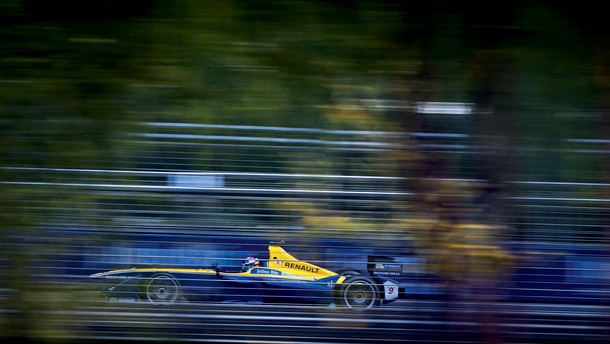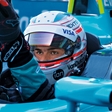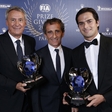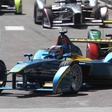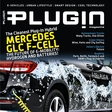
The first season of Formula E was more than successful, as is evident from the statistics. Followed by a vast 190.3 million television viewers, the races also generated as much as 5.2 billion impressions in social media. But what the statistics can't quantify is the tension that ratchets up to the very end, and sends adrenaline coursing through the drivers' veins, attracting viewers who have wanted nothing but bread and circus, ever since the Roman times. The thinnest margin between the winner and the runner-up was a mere 0.433 seconds (Nico Prost, Miami), while the widest was still only 6.973 seconds (Sam Bird, second London race). Are you still wondering why the 30 year-old Brazilian, Nelson Piquet (yes, the son of the three-time F1 world champion, Nelson Piquet) won the inaugural season by a single point, ahead of a 26 year-old Swiss, Sebastien Buemi, who has already successfully competed in F1, the WEC (World Endurance Championship) and in the infamous 24-hour Le Mans race, with his Toyota TS030 Hybrid?

No more "Renault only:" in the 2015/16 season the teams can develop their own (electric) motor, inverter, gearbox and cooling system.
One of the reasons the Spanish founder and businessman, Alejandro Agag, organizes racing events in major cities around the world is to promore cleaner racing in places with the highest levels of pollution. It's no surprise that Formula E instantly partnered up with stars such as the former F1 world champion, Alain Prost, Virgin Group's multi-billionaire Richard Branson, American legend Mario Andretti, Hollywood actor Leonardo di Caprio, and even racers like Bruno Senna, Jarno Trulli and more. Renault and Audi are, of course, no-brainers. Interestingly, Branson's prediction from London this year, that in five years' time Formula E will overtake Formula 1, was no longer subject to the covert mockery and contentious backchat of the past. Have people changed their mindset, now finding electric energy exciting in racing? To some degree, yes. After all, the first season served up many tight races and spectacular collisions (which fortunately had no severe consequences).

In contrast to the first season, the teams are, as of now, no longer obliged to stick with same standardized mechanics and electronics. If the first season required that everyone drive the same car, the Spark Renault SRT 01E (chassis by Dallara, electric motor by McLaren, battery by Williams Advanced Engineering, five-speed transmission by Hewland and Michelin tires), then the upcoming season will allow the teams to develop their own (electric) motor, inverter, gearbox and cooling system. According to unofficial reports, eight of the ten teams did just that, as one could glean from the Youtube video in which engines were tested, and they all sounded different. Will looser technical regulations intensify the racing, as we saw last season? We'll have to wait at least until the year's end and the first race. But one thing's for sure--the formula will be a lot more diverse.

Teams and drivers in the second season
ABT Schaeffler Audi Sport - Lucas di Grassi, Daniel Abt
Andretti Formula e Team - Simona de Silvestro, Robin Frijns
Dragon Racing - Jerome D'Ambrosio, Loic Duval
DS Virgin Racing Formula e Team - Sam Bird, Jean-Eric Vergne
Renault e.dams - Nicolas Prost, Sebastien Buemi
Mahindra Racing Formula e Team - Bruno Senna, Nick Heidfeld
Nextev TCR Formula e Team - Nelson Piquet Jr., Oliver Turvey
Team Aguri - Antonio Felix da Costa, N. Berthon
Trulli Formula e Team - Vitantonio Liuzzi, Salvador Duran
Venturi Formula e Team - Stephane Sarrazin, Jacques Villeneuve

The 2016 race calendar
February 6, 2016, Buenos Aires (Argentina)
March 12, 2016, (yet to be determined)
April 2, 2016, Long Beach (USA)
April 23, 2016, Paris (France)
May 21, 2016, Berlin (Germany)
June 4, 2016, Moscow (Russia)
July 2, 2016, London (Great Britain)

In 2015/2016 season, the engine power during the race is increased to 170 kW (232 hp), while engine power during qualifying remains the same (200 kW/272 hp) as last year. 320 kilogram battery pack (provided by Williams Advanced Engineering) will have to work harder, thus increasing the importance of battery management.
